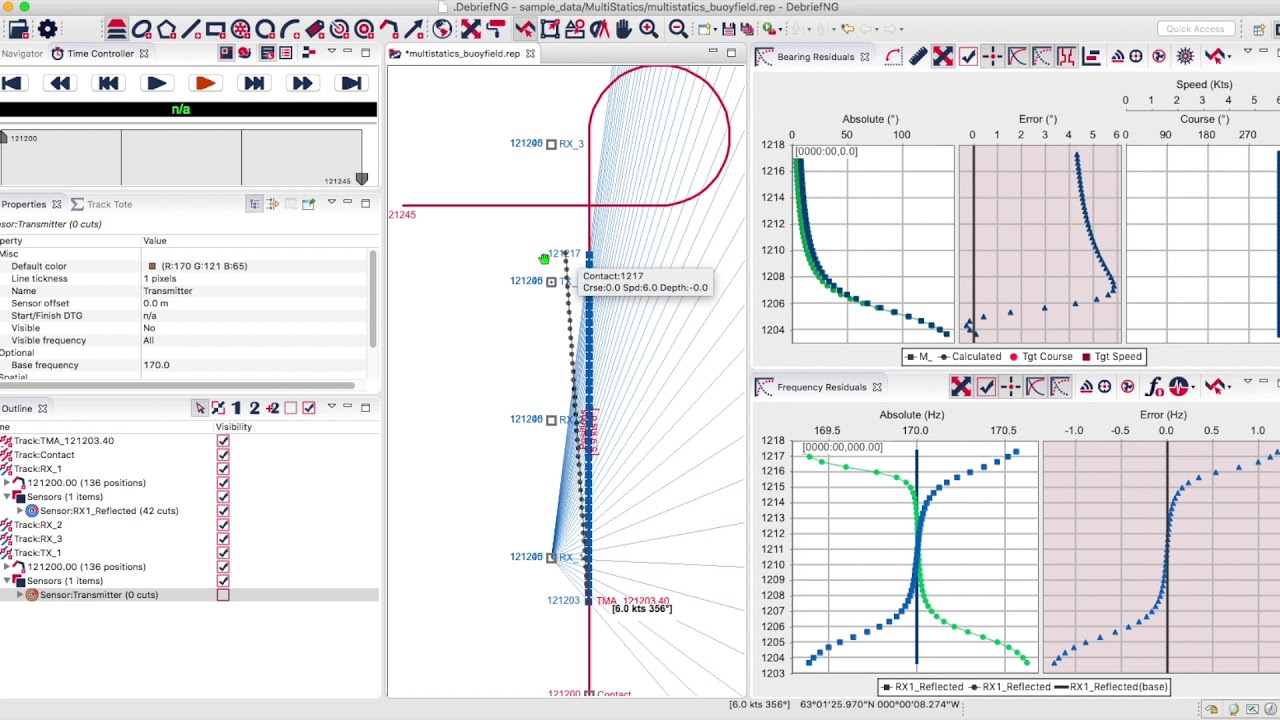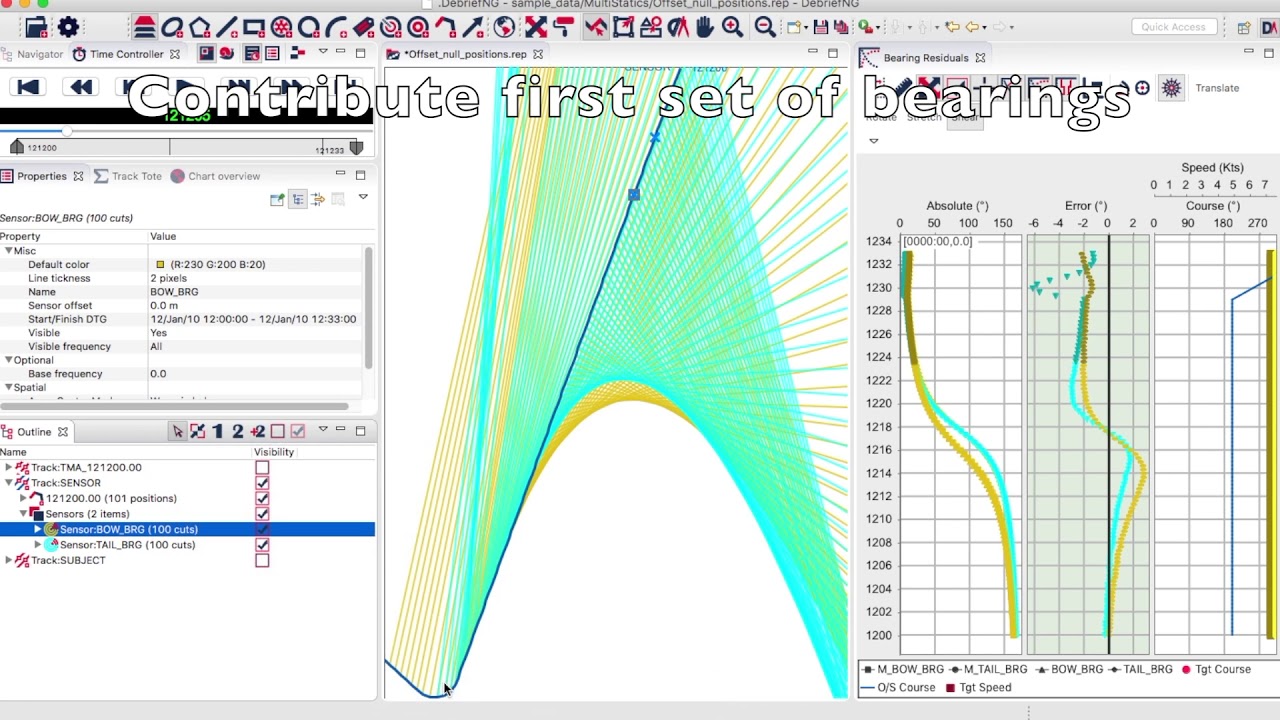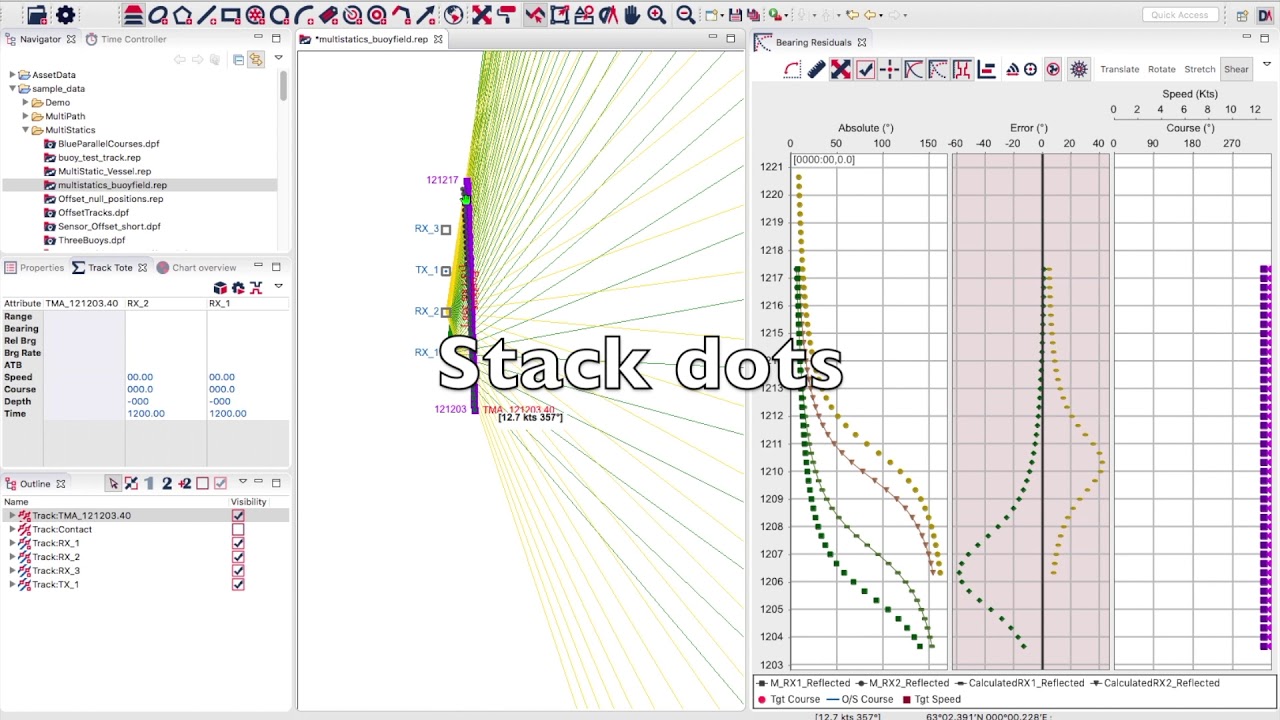Learn more about handling periods of missing data in Debrief
Read MoreOn occasion it’s useful to determine the version of Java that a Debrief installation is using.
Read MoreAfter a couple of months of development, we're preparing the release of the new Debrief scripting ability This new capability is intended to enable Debrief Power Users to take on more advanced data manipulation tasks, including: Apply bulk changes to Debrief objects Import unexpected data-types from file Conduct ad-hoc calculations on Debrief data
Read MoreWe're coming to the end of another new feature. Most of the time Debrief data comes in digital form, captured on another system. But, occasionally it arrives in text form and has to be transcribed. Some users do this within Debrief, others perform the task in a text editor such as Notepad, then save the...
Read MoreSymbols are used to add value to analysis plots, through giving a visual indication of the vehicle type. In the past, the symbols have been hard-coded in Debrief, but now Debrief supports the provision of vectored symbols in the industry standard SVG format. The first set of symbols is shown below. Please feel free to...
Read MoreWith the conclusion of Sprint 4, the first major work package ("Epic" in Scrum language) is coming to completion, Export to PPT. In a multi-threaded package of work different members of the team have: designed PowerPoint master slides developed Python code to iteratively work through the various processes involved in transforming Debrief screen pixels into...
Read MoreTo support the development of multi-static analysis capabilities, we've added the ability to introduce 3 actors in the frequency optimisation process: transmitter, subject, and receiver. See more in the video below:
Read MoreThe main way for narrative data to get into Debrief is by the translation of system recording into .REP format. But, on occasion a Debrief analyst wishes to enter one or more narrative entries directly into Debrief. Historically this has always been possible right-clicking on the Narratives folder in the Outline View, or by right-clicking...
Read MoreAnalysts have always been able to use Target Motion Analysis (TMA) algorithms to predict missing track data using passive sensor data. Traditionally, this has only allowed use of a single sensor. Now analysts would like to triangulate a track using multiple sensors. This trial release will let you do just that, to perform manual TMA....
Read MorePart of the package of new features to support multi-statics is to allow manual TMA to be conducted using sensor measurements from more than one platform. This video shows how sensor data from two floating sensor buoys can be used to triangulate a straight leg of positional data. The changes to support this have affected...
Read More





